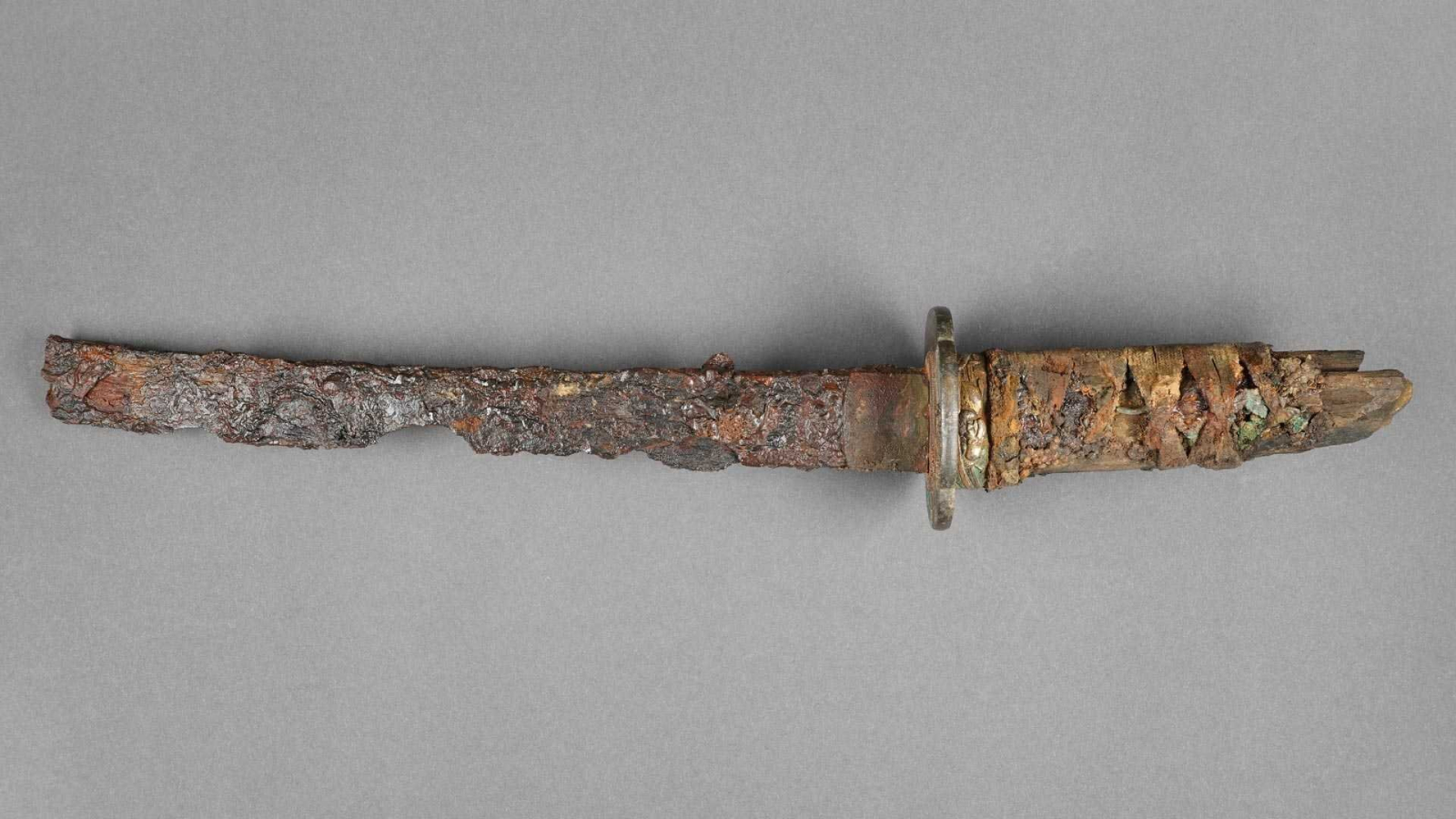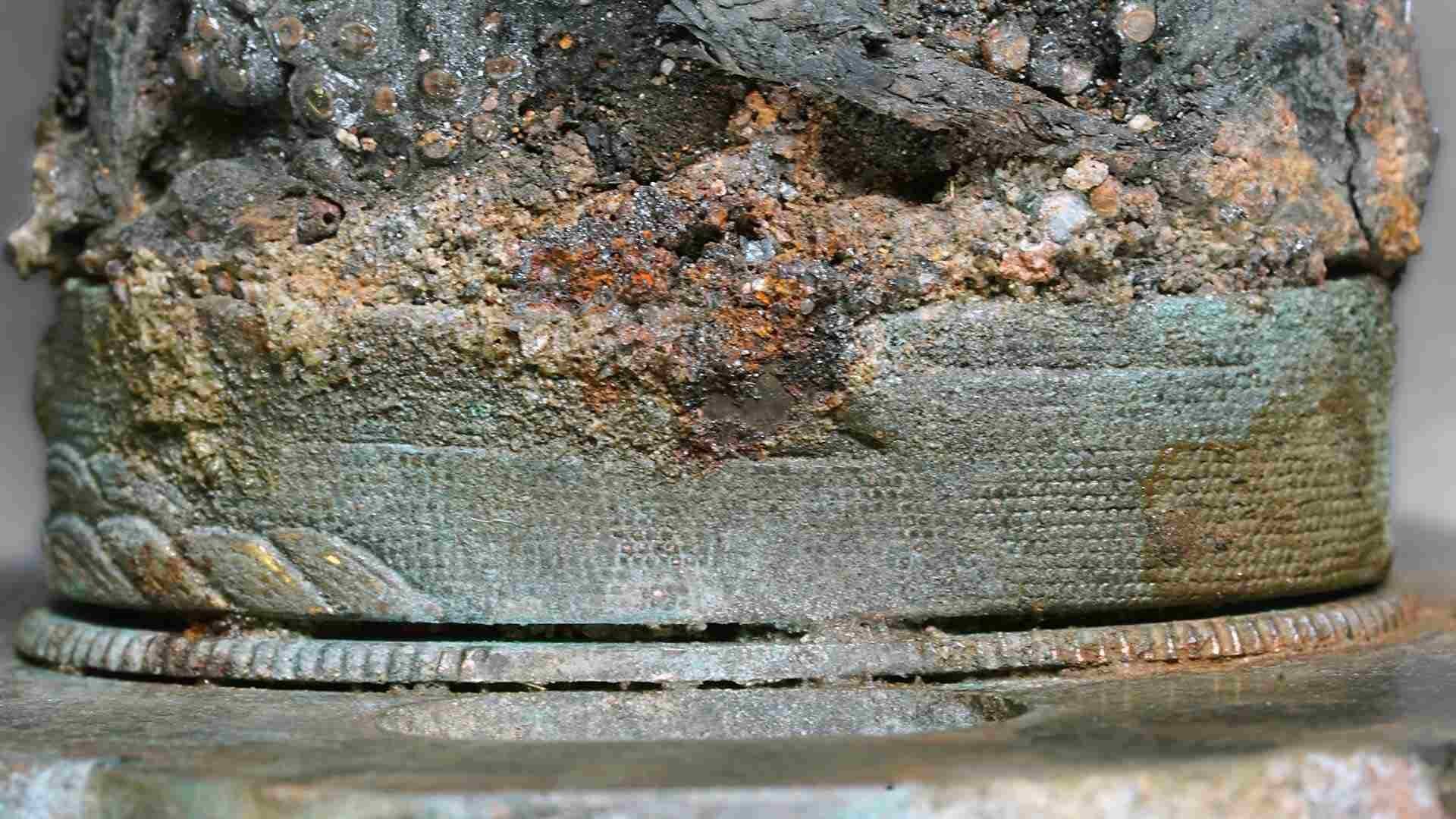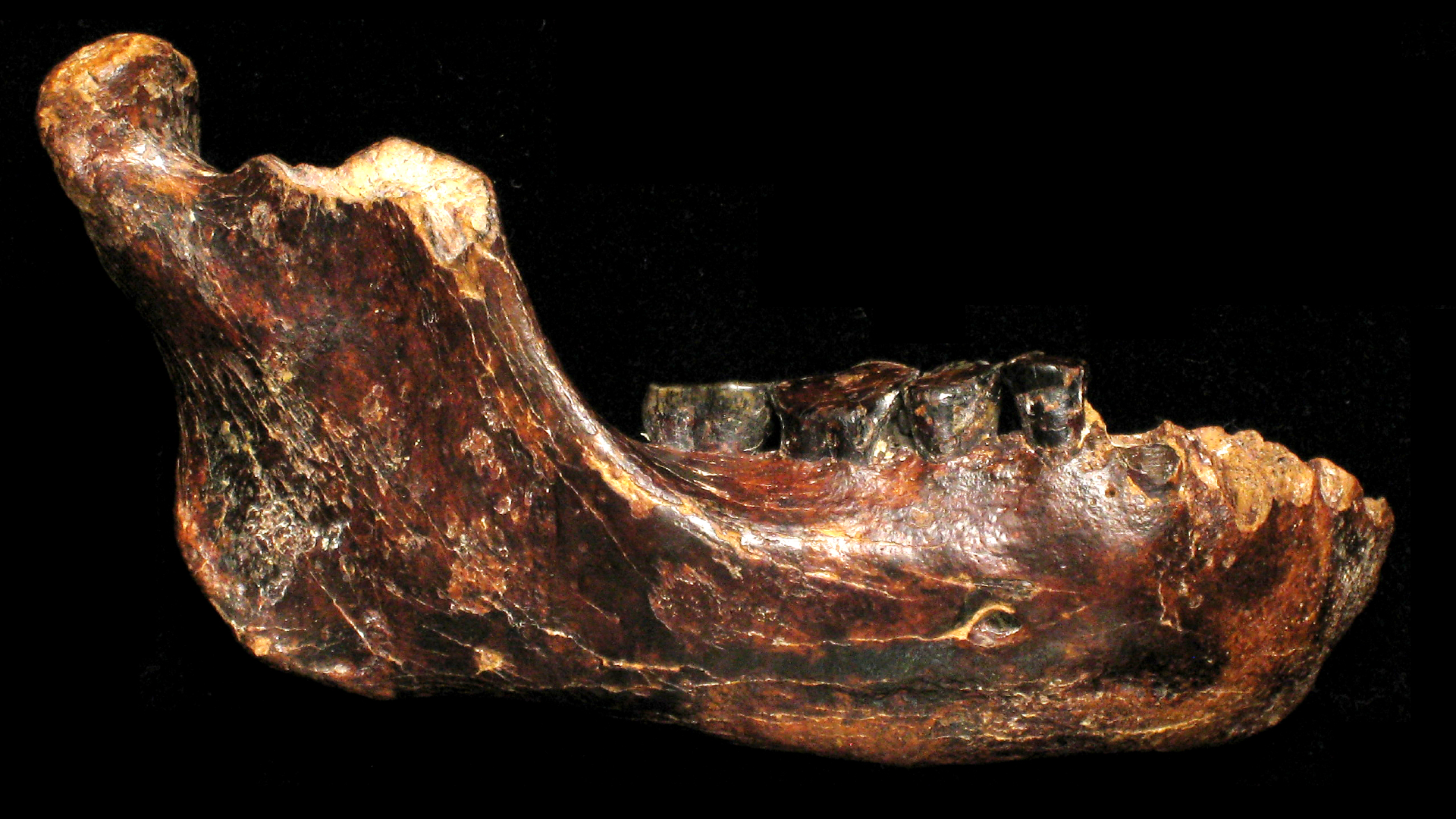'Richly decorated weapon' from Edo Japan unearthed in World War II rubble in Germany
The 17th-century sword was found in a cellar that was destroyed during World War II, but it's unknown how it ended up there.

Archaeologists in Germany have unearthed a rare, 17th-century Japanese samurai sword from the wreckage of a cellar that was destroyed during World War II.
The team discovered the heavily corroded short sword, known as a wakizashi, while excavating Molkenmarkt, Berlin's oldest square. Initially, the archaeologists thought the weapon was a military parade saber, but further analysis revealed the sword was actually from Edo period Japan (1603 to 1868). The weapon's blade might be even older, possibly dating to the 16th century, according to a translated statement from the Museum of Prehistory and Early History of the Berlin State Museums. It may have been brought to Germany in the 1800s as part of a diplomatic mission, archaeologists said.
"Who could have imagined that at a time when Japan was isolated and hardly any European travelers came to the country, such a long-used and richly decorated weapon would end up here in Berlin?" Matthias Wemhoff, state archaeologist of Berlin and director of the Museum of Prehistory and Early History, said in the statement.
Archaeologists with the Berlin State Office for Monuments found the sword in the winter of 2022 while excavating residential and commercial building cellars in Molkenmarkt, which had been reduced to rubble during World War II and covered with streets and intersections in the 1960s. The former cellars were filled with war-related artifacts, including bridles, stirrups, curbs and harnesses that had been disposed of toward the end of the war, according to the statement. But the discovery of the Japanese sword in one of the cellars was unexpected.

Now, restoration work has revealed that the weapon was a fragmentary wakizashi, a sword that "was once reserved for dignitaries as a status-related weapon," Wemhoff said. Historically, wakizashi were carried by samurai as a backup weapon, in case they needed to fight in a small room or in close proximity to their target where it would be challenging to unsheathe a longer sword known as a katana, according to the Samurai Museum Shop. They are also known as a "companion sword" and were worn at all times by men in the samurai class, according to the British Museum.
Related: 7.5-foot-long sword from 4th-century Japan may have 'protected' deceased from evil spirits
The newfound sword's wooden handle was damaged by heat, but pieces of the wood and the textile wrappings on the sword are still preserved, according to the statement. Further restoration showed the 0.4-inch-wide (1 centimeter) ferrule, or the metal ring at the base of the handle near the blade, depicted Daikoku, one of the seven gods of luck in Japan, who was identified due to his hammer and rice sack.
Sign up for the Live Science daily newsletter now
Get the world’s most fascinating discoveries delivered straight to your inbox.

The team also found now-damaged painted decorations of chrysanthemum flowers and water lines on the sword's guard. The style of the sword indicates it is from the Edo period.
An X-ray showed that the blade had been shortened and that the handle was not its original one. The researchers noticed two holes in the tang — a hidden piece that holds the sword together — that would have held two wooden pins that attached the handle. But the current handle was attached with only one of these holes.


Because the handle is not the original, the blade may be even older than the Edo period, perhaps dating to the 1500s century, museum officials wrote in the statement.
It's unknown how the sword ended up in Berlin, but Wemhoff had a few ideas.
"Perhaps the sword was a gift from the Takenouchi Mission in 1862 or the Iwakura Mission, which followed eleven years later, of Japanese ambassadors who visited Europe and the rest of the Western world to build relationships and gather impressions," he said. "The spatial proximity of the Molkenmarkt with its surrounding aristocratic palaces to the Berlin Palace suggests this."
German ruler Wilhelm I met with the Japanese embassy of the Takenouchi Mission at his palace while he was king. In 1873, when he was emperor, Wilhelm I received the embassy of the Iwakura Mission, Wemhoff said. However, it's not known how the people who disposed of the sword at Molkenmarkt during World War II would have ended up with it, he said.

Laura is the archaeology and Life's Little Mysteries editor at Live Science. She also reports on general science, including paleontology. Her work has appeared in The New York Times, Scholastic, Popular Science and Spectrum, a site on autism research. She has won multiple awards from the Society of Professional Journalists and the Washington Newspaper Publishers Association for her reporting at a weekly newspaper near Seattle. Laura holds a bachelor's degree in English literature and psychology from Washington University in St. Louis and a master's degree in science writing from NYU.










